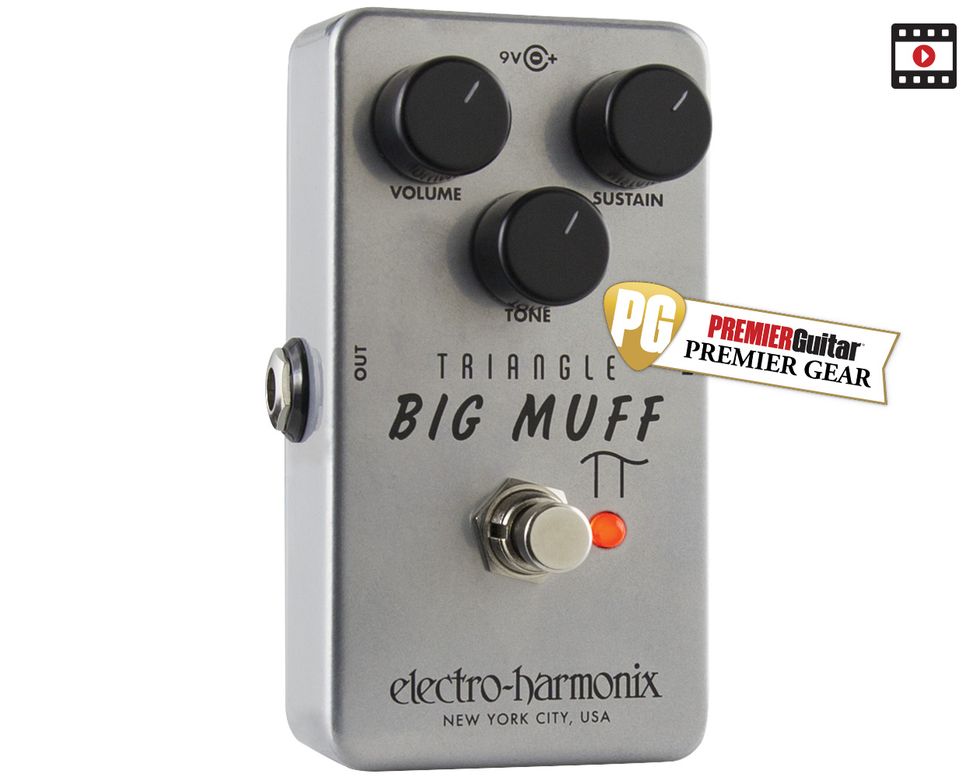RatingsPros:Cutting but singing treble tones. Sounds bold where some Muffs disappear. Cons: Some extra-sizzling overtones at higher gain levels. Street: $80 Electro-Harmonix Triangle Big Muff ehx.com | Tones: Ease of Use: Build/Design: Value: |
Even seasoned fuzz heads might not know that the first Big Muff hit music stores in 1969—a year more commonly associated with the reigns of the Fuzz Face and Tone Bender. But even in that earliest incarnation, which EHX aims to replicate in the Triangle Big Muff reviewed here, the Big Muff was a very different and enormous sounding fuzz.
The first-generation Big Muff, like almost all those that came after, used four transistors and a soft clipping stage to generate a smoother fuzz and a ton of sustain. But the new Triangle, like that first Muff that inspires it, delivers a toppier, often raspier, more slicing variation of that recipe. And regardless of how closely it replicates the original, it occupies a unique tone space in the Muff family.
It has more definition and top-end detail than a Russian Big Muff, and to my ear, less air, balance, and growl than a good Ram’s Head. But for players frustrated by a Russian Muff’s woolier side, the peaky, slicing highs at elevated tone levels will be a godsend. They are great singing counterpoint to the still-hefty bass output, and they make the Triangle a cool, meatier stand-in for a Boss Tone or Fuzz Rite when you need more mid-’60s color.
Test gear: Fender Telecaster Deluxe with Curtis Novak Widerange humbuckers, Fender Jaguar, Fender Stratocaster, ’68 Fender Bassman
Watch the First Look:









![Rig Rundown: Russian Circles’ Mike Sullivan [2025]](https://www.premierguitar.com/media-library/youtube.jpg?id=62303631&width=1245&height=700&quality=70&coordinates=0%2C0%2C0%2C0)

















